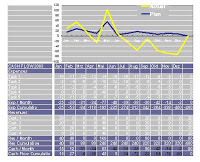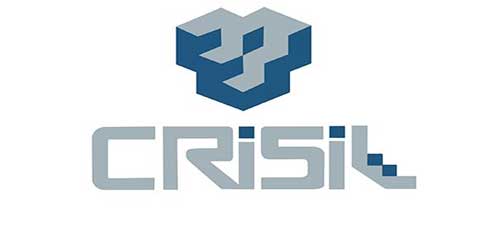- In April/May 1992, the Securities and Exchange Board of India issued operational guidelines to financial intermediaries i.e., stock broker and sub-brokers operating on the stock exchange and insist for the registration. This was followed by tussle between the Securities and Exchange Board of India and the stock booking community over registration related issues and finally assumed rather disturbing dimensions with stockbroker vehemently protesting against SEBI’s authorization approach, trading on all the major stock exchange has remained suspended for serial days may 1992.it is an example of under haste with which SEBI has handled the registration issue. This type of postures of confrontation adopted by SEBI and stockbroker was undesirable. The market reformer, which SEBI desire to introduce, will not be effective with such attitude on the part of Securities and Exchange Board of India. It will be a sad day for the market when SEBI starts dictating that the market should behave the way it deems proper. The Ex-SEBI chief never seems to tri of accusing the stock exchange of the not taking appropriate action against erring broker who are often left free with small penalties which do not deter them for defaulting again. In brief, the way Securities and Exchange Board of India is going about with its package of reformers for the healthy development of the capital market is not calculated to endear it to the various financial intermediaries it seeks to reform. it is one thing to spell out the operational guideline for financial intermediaries but it is a difficult matter when it comes to enforcing them. This demand larger and efficient surveillance machinery fully backed up by administrative capability. Going by the past performance, it appears that SEBI is not different from other bureaucratic organization. Such attitude on the part of SEBI is neither fair not useful for the healthy growth and development of capital market in India. SEBI should encourage self-regulation among financial intermediaries so that SEBI is not forced to put restrictions and controls on them. Fortunately, the present approach of SEBI toward financial intermediaries appears to be quite reasonable, positive and constructive.
- Securities and Exchange Board of India keeps doling out regularly information about investors’ complaints. When it is good to bring investors’ grievance to public notice, one would like to know what kind of breakthrough SEBI has achieved in the redressed of these grievances. Since an overwhelmingly large percentage of the complaints related to non-receipt of refunds allotment letters, dividends on share and interest on debenture these have very little to do with the performance and the function of the stock exchanges. The introduced of “stock invest” should go a long way in mitigating the evil of non-receipt of refunds.
- It is a fact that stock exchange in India suffers from many organization, procedural and deficiencies.The reformer is necessary to ensure the efficient and healthy functioning of capital markets secondary as well as primary. It is the responsibility of the stock exchange supervisory body to see that all players conduct themselves in a responsible and ethical way. But that needs not call for direct intervention in the market by SEBI. Reforms should be aimed primarily at strengthening the market’s organizational formwork and rectifying infrastructure inadequacies to enable to the stock exchange to efficiently cope up with the expanding volume of business. This essence of reform is not given adequate attention and important by SEBI. The attitude of imposing reforms on the stock exchange will not give positive benefits but will lead to new problems and confrontation between Securities and Exchange Board of India on the one side and other agencies (intermediaries) as well as stock exchange on the other side.
- Securities and Exchange Board of India is supposed to protect the interest of investors in capital issues. For the year, this responsibility was given to the controller if capital issues (CCI). The CCI underpriced every issue, thereby protecting the investor at the expense of the issuer. Recognizing that this discourages many an honest of the issuer from equity issue while pushing several dishonest promoters into the void the government now favors free pricing, SEBI’s discussion note on the subject, however, confuses its role. Instead of recognized that the free rider problem can only be minimized and not prevented totally in a free pricing environment, SEBI has sought to promote guideline, some if which will, if implemented, return the situation on the day to rigid CCI control. There are many points noted in the guideline but are not clear. Such confusion is undesirable. SEBI is supposed to rectify its guideline and remove such confusions.
- One of the major criticisms against the SEBI Act was that it did not provide SEBI with sufficient powers it still has not got many of the circle powers. It is seeking including the rights to prosecute or fine. Under the Act SEBI can only recommend action to Government, but it cannot launch direct action against any erring capital market operator. In contrast, the securities exchange commission of the US can prosecute and fine anyone on offenses ranging from unlawful representation to deliberate misuse of the capital market. SEBI should be given the power of notification regulation without government approval and prosecute without government sanction.
- The image of SEBI as a regulator body is not a positive one. To make an impact, regulatory bodies should be well supported by the self-regulatory organization as regulatory bodies would be ineffective unless they foster institution or self- regulation to help them along.
SEBI is not increasingly emerging to be the regulator-par excellence .SEBI intends to share this regulator role through self-regulatory with the co-operation of self-regulator bodies like AMBI (Association of Merchant Banker of India) or stock exchange etc. however self-regulation is still to find its root among various players of Indian capital market, unlike in USA, UK, and other development countries. - A year after being given the legal sanctions the SEBI finds itself embroiled in an unending number of controversies. Much of this springs from the week foundation if the low organizational structure on which it is established. Other comes from the strong resistance to change amongst the stock market community, who so far has got way with very little regulation. This situation has affected the smooth working and positive contribution of a SEBI. In fact, SEBI has been facing problem in implementing its directive because the stock exchange and brokers are seeking shelter under the securities contracts (Regulation) Act in Indian companies Act.
- The moral support offered by the government to SEBI in not very effective. Many of SEBI problem are due to lack of adequate powers given to SEBI. Moreover, SEBI received power on a piecemeal basic and this in the turn reflected in the piecemeal guideline. Such piecemeal rendering of power is not useful to SEBI. As a regulator, the SEBI’s image is not good as every announcement of SEBI could be taken to court and eventually changed. This is unfair as what a regulator says should stay. It is necessary to give premier stated of SEBI in regard to regulation of stock exchange by transferring all necessary powers from the company law board and department if company affairs to SEBI. Such consolidation of power will make SEBI a strong regulator agency. It is also necessary to give more autonomy to SEBI and present bureaucratic control on SEBI must be removed.
- Securities and Exchange Board of India is a good watchdog. However, it has an adopted practical and cautious approach while introducing reforms in the various area under its control. Unfortunately, the top administration of SEBI fails to take into consideration the fact that a lot of education is required to change people. The practice of taking the unilateral decision is not proper on the part of SEBI. It should take a decision on the basic of consensus and compressive with unconcerned parties. The ex-chairman of Securities and Exchange Board of India has rightly pointed out that SEBI’s intention is not to interfere in the corporate sector’s working and capital market but the protect the invest of the investors. This approach indicated the positive change on the part of the Securities and Exchange Board of India.
Read Also:
What are Functions of RBI, IRDA and SEBI









 CRISIL Rating has adopted the conventional rating system prevailing in the advanced centuries. The main symbols used in credit rating of debt securities and their meanings are given below:
CRISIL Rating has adopted the conventional rating system prevailing in the advanced centuries. The main symbols used in credit rating of debt securities and their meanings are given below: